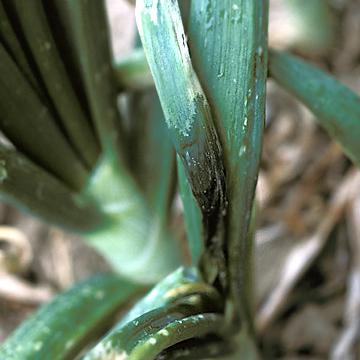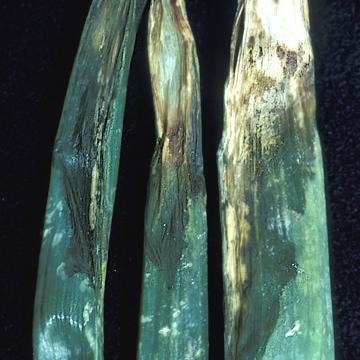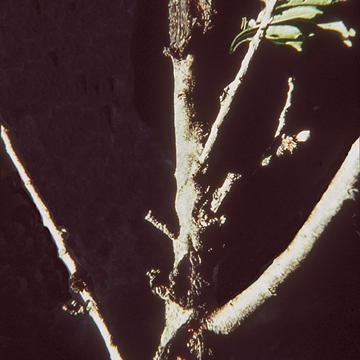DISEASE: Bacterial flower stalk and leaf necrosis
HOST: Onion
Dark, rotted areas of stalk and leaves caused by systemic invasion of the pathogen.
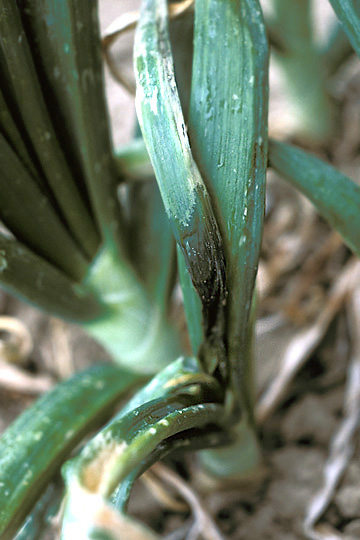
Bacterial flower stalk and leaf necrosis | Onion
DISEASE: Bacterial flower stalk and leaf necrosis
HOST: Onion (Allium cepa)
PATHOGEN: Pseudomonas marginalis pv. marginalis
SOURCE: S. Mohan
DISEASE: Bacterial flower stalk and leaf necrosis
HOST: Onion
Gray-brown rot of onion after inoculation. Disease starts as small, water-soaked lesions that later develop into slimy, gray-brown rot. The disease progresses downward from the stalk and may rot the entire bulb.
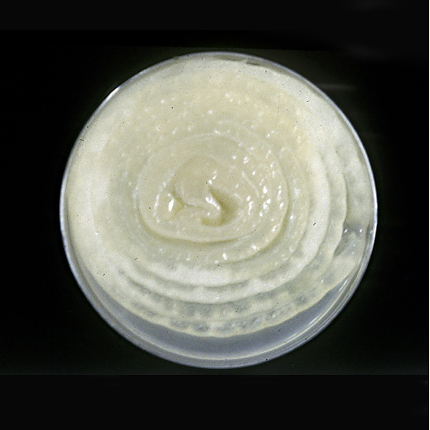
Bacterial flower stalk and leaf necrosis | Onion
DISEASE: Bacterial flower stalk and leaf necrosis
HOST: Onion (Allium cepa)
PATHOGEN: Pseudomonas marginalis pv. marginalis
SOURCE: R. Gitaitis
DISEASE: Bacterial flower stalk and leaf necrosis
HOST: Onion
Leaves with necrosis and rot. The common name for this disease is the same as those used for two other diseases. Also, another common name for this disease is bacterial soft rot.
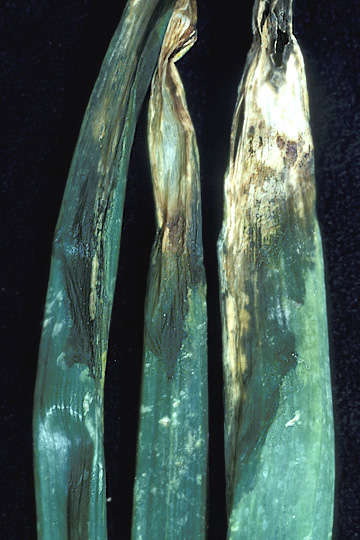
Bacterial flower stalk and leaf necrosis | Onion
DISEASE: Bacterial flower stalk and leaf necrosis
HOST: Onion (Allium cepa)
PATHOGEN: Pseudomonas marginalis pv. marginalis
SOURCE: S. Mohan
DISEASE: Bacterial hyperplastic canker
HOST: Almond
Diseased tree with multiple cankers. Margins of cankers are rough, soft, cheesy, dark brown, and have scalloped water-soaked spots that turn brown. Multiple cankers may girdle and kill small twigs.

Bacterial hyperplastic canker | Almond
DISEASE: Bacterial hyperplastic canker
HOST: Almond (Prunus dulcis)
PATHOGEN: Pseudomonas amygdali
SOURCE: P. Psallidas
DISEASE: Rugose leaf curl
HOST: Clover
Two rugose, distorted white clover leaves and a healthy leaf. Rugose leaf curl is caused by an unidentified phloem-infecting bacterium.
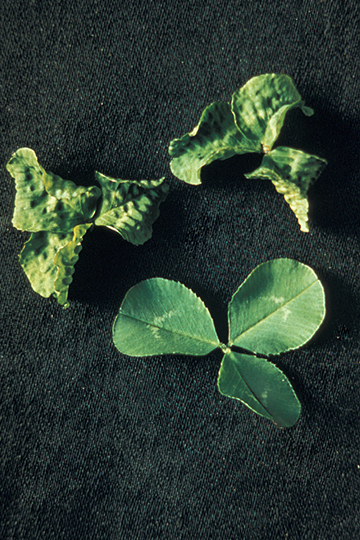
Rugose leaf curl | Clover
DISEASE: Rugose leaf curl
HOST: Clover (Trifolium repens)
PATHOGEN: Phloem-infecting bacterium
SOURCE: D. Teakle


